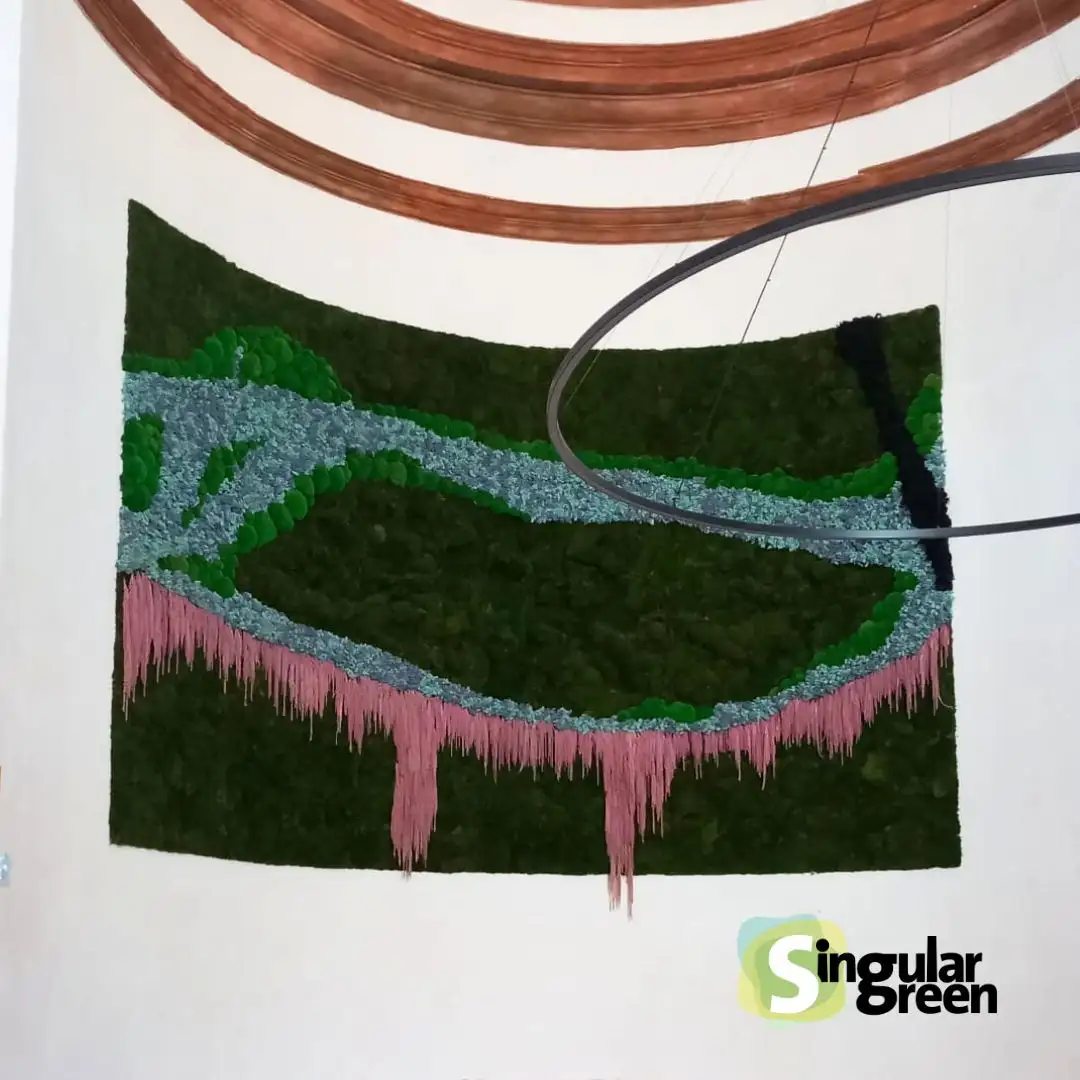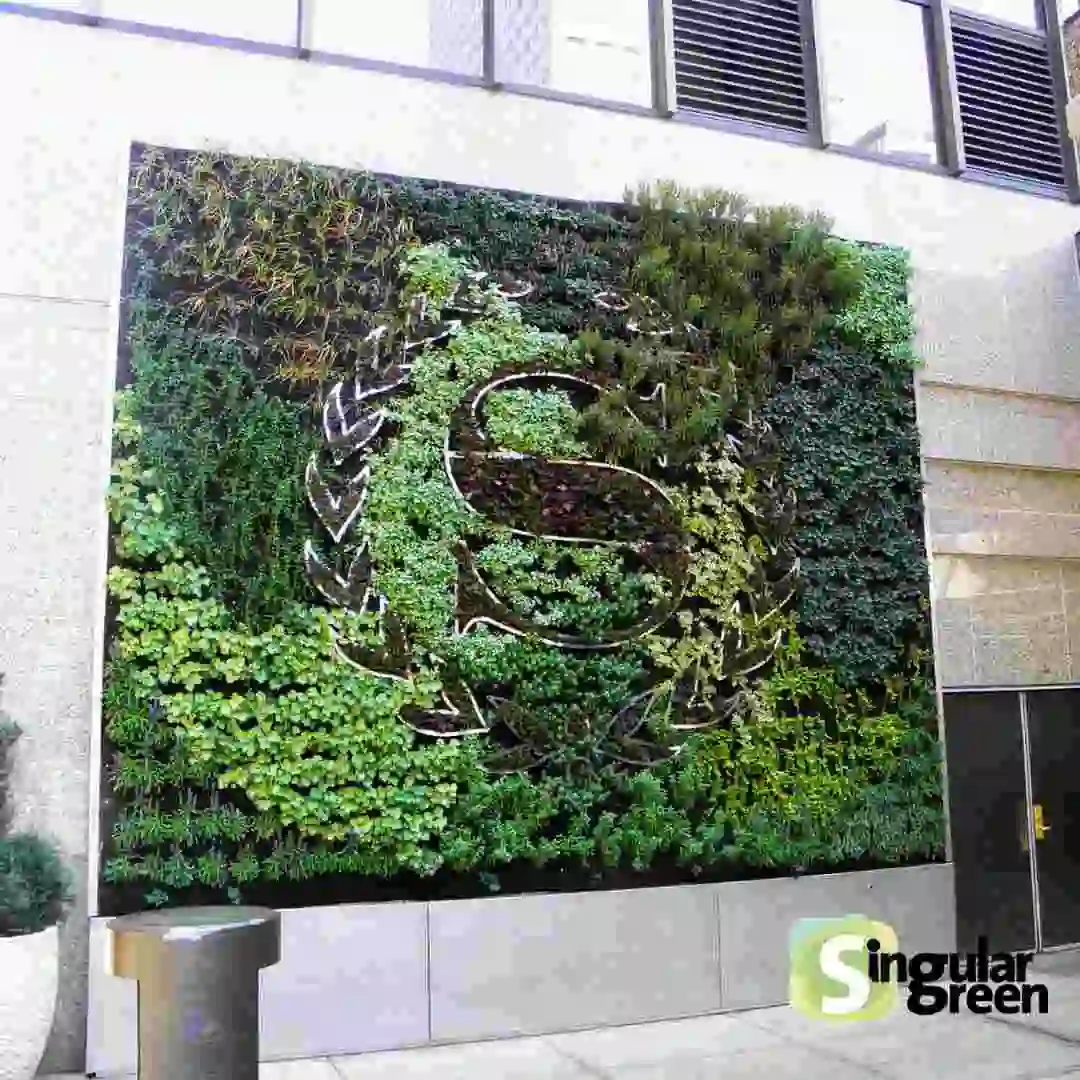Are you looking to add a touch of beauty and serenity to your living space? Look no further than living walls, also known as vertical gardens.
These stunning creations are more than just aesthetically pleasing; they are a way to bring nature indoors and enhance your environment.
In this ultimate guide, we will explore everything you need to know about living walls, from their benefits to the different types available and how to create your own.


Living walls have gained popularity in recent years for their ability to transform any space into a green oasis. They not only provide visual appeal but also offer numerous health and environmental benefits. Whether you have a small apartment or a large office building, a living wall can be tailored to suit your space and preferences.
Join us as we dive deeper into the world of living walls and discover how these vertical gardens can breathe new life into your home or workspace.
Get ready to be inspired and learn how to create your own green masterpiece in this comprehensive guide to living walls.
Benefits of incorporating living walls into your space
Living walls, also known as vertical gardens, offer a plethora of benefits that can transform your living or work environment. These innovative green installations not only enhance the aesthetic appeal of a space but also provide a range of practical advantages that contribute to your overall well-being and the health of your surroundings.
One of the primary benefits of living walls is their ability to improve air quality. Plants have a remarkable capacity to absorb and filter out harmful airborne pollutants, such as volatile organic compounds (VOCs), carbon dioxide, and even particulate matter.
By incorporating a living wall into your space, you can enjoy fresher, cleaner air, which can have a positive impact on respiratory health and overall indoor air quality.
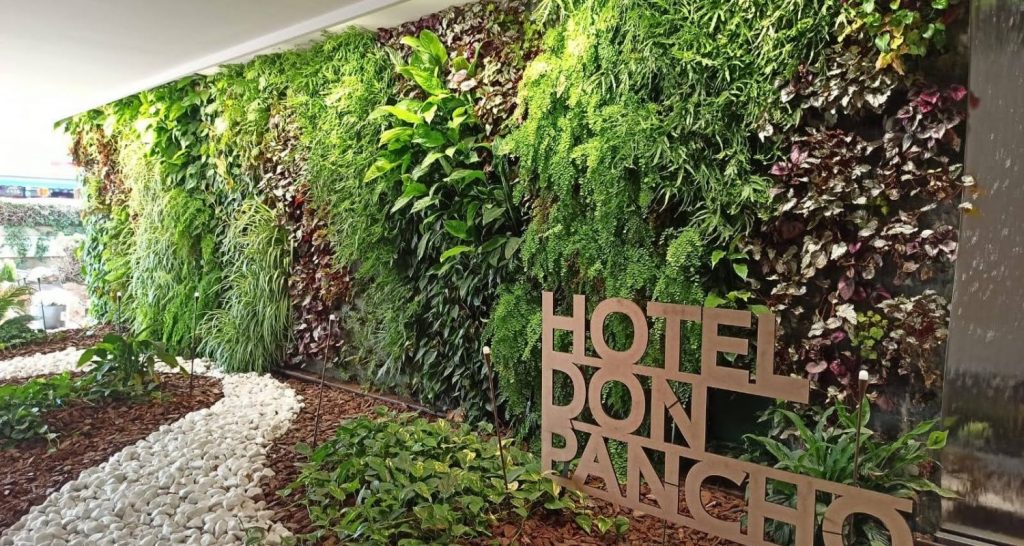
In addition to air purification, living walls also have a remarkable ability to regulate temperature and humidity levels. The evapotranspiration process of the plants can help to cool the surrounding air, reducing the need for energy-intensive air conditioning systems. This not only contributes to a more comfortable and pleasant environment but also has the potential to lower your energy costs and carbon footprint.
Types of living walls and vertical gardens
Living walls come in a variety of styles and configurations, each with its own unique features and design elements. Understanding the different types of living walls can help you choose the option that best suits your space and aesthetic preferences.
One of the most common types of living walls is the modular living wall system. These systems typically consist of pre-planted panels or modules that can be easily installed on a wall or structure. The modules are often made of lightweight materials, such as felt or recycled plastics, and can be customized in terms of plant selection and layout.
Modular living walls are a popular choice for both indoor and outdoor spaces, as they offer a quick and hassle-free way to incorporate greenery into your environment.
Another type of living wall is the hydroponic living wall, which utilizes a water-based growing system instead of soil. In this system, the plants are rooted in a nutrient-rich solution, which is circulated through the wall’s structure. Hydroponic living walls are often used in commercial or high-traffic areas, as they require less maintenance and can be more resilient to environmental stresses.
A third type of living wall is the green facade, which involves the use of climbing or trailing plants that are trained to grow up a supporting structure, such as a trellis or wire mesh.
These living walls are often used to cover the exterior of buildings, providing a natural and visually striking way to enhance the building’s appearance while also offering insulation and shading benefits.
Choosing the right plants for your living wall
Selecting the appropriate plants for your living wall is crucial to its success and long-term viability. The plant selection process should take into account factors such as the growing conditions of your space, the level of maintenance you’re willing to provide, and the overall aesthetic you’re aiming to achieve.
When it comes to indoor living walls, it’s important to choose plants that are well-suited to the lower light levels and limited root space typically found in indoor environments.
Some excellent options include various species of philodendrons, pothos, and peace lilies, which are known for their air-purifying properties and ability to thrive in low-light conditions.
For outdoor living walls, you can explore a wider range of plant options, including drought-tolerant succulents, fragrant herbs, and flowering perennials. These plants not only add visual interest but also provide valuable ecosystem services, such as attracting pollinators and supporting local wildlife.
Regardless of the location, it’s essential to select plants that are compatible with the growing medium and irrigation system of your living wall. Consulting with a horticulturist or a living wall specialist can help you make informed decisions and ensure the long-term health and vibrancy of your vertical garden.
Design considerations for creating a stunning living wall
Designing a living wall that is both visually appealing and functionally efficient requires careful planning and consideration of various factors. From the layout and plant selection to the integration of lighting and irrigation systems, each element plays a crucial role in the overall success of your living wall project.
One of the primary design considerations is the layout and composition of the living wall. The arrangement of the plants, their placement, and the overall visual balance can significantly impact the aesthetic appeal of the installation. Experimenting with different patterns, color schemes, and plant heights can help you create a living wall that is both visually striking and harmonious with the surrounding environment.
Lighting is another crucial factor in the design of a living wall, particularly for indoor installations. Adequate lighting, whether natural or artificial, is essential for the plants’ growth and health. Incorporating LED grow lights or strategically positioning the living wall near windows can ensure that the plants receive the necessary light they need to thrive.
The integration of an efficient irrigation system is also a crucial design consideration. Living walls require a consistent and reliable water supply to maintain the plants’ health and prevent wilting or disease. Automated irrigation systems, such as drip or misting systems, can help ensure that the plants receive the right amount of water without the need for constant manual watering.
By carefully considering these design elements and seeking the guidance of experts, you can create a living wall that not only enhances the aesthetics of your space but also provides a range of environmental and health benefits.
Installing and maintaining your living wall
The successful installation and long-term maintenance of a living wall are essential for ensuring its vibrancy and longevity. Whether you’re tackling a DIY project or working with a professional living wall installer, understanding the key steps involved can help you achieve the desired results.
When it comes to installation, the process typically begins with the preparation of the wall or surface where the living wall will be placed. This may involve securing a sturdy frame or structure to support the weight of the plants and growing medium. Depending on the type of living wall system, the installation may also require the integration of irrigation lines, drainage systems, and electrical components for lighting or monitoring.
Once the foundation is in place, the living wall can be assembled and planted. This step may involve carefully placing the pre-planted modules or individually planting the selected species into the growing medium. Proper plant spacing, root placement, and soil compaction are crucial to ensure the plants’ successful establishment and long-term growth.
Maintaining a living wall requires a consistent and diligent approach. Regular watering, fertilization, and pruning are essential to keep the plants healthy and the living wall looking its best. Monitoring for pests or diseases and addressing any issues promptly can also help extend the lifespan of your vertical garden. Seeking the guidance of a professional horticulturist or living wall specialist can be particularly helpful in developing a tailored maintenance plan for your specific installation.
By following best practices for installation and maintenance, you can ensure that your living wall remains a vibrant and thriving addition to your space for years to come.
Creative ideas for incorporating living walls indoors
Living walls are not limited to outdoor spaces; they can also be seamlessly integrated into indoor environments, adding a touch of nature and enhancing the overall ambiance. From residential settings to commercial spaces, the possibilities for incorporating living walls indoors are endless.
In a home setting, a living wall can serve as a stunning focal point in the living room, dining area, or even the bedroom. By strategically placing the living wall, you can create a visually striking contrast between the natural greenery and the surrounding decor. Additionally, the air-purifying properties of the plants can contribute to a healthier and more relaxing indoor environment.
For office spaces and commercial settings, living walls can be used to create a sense of biophilic design, which emphasizes the connection between humans and nature. These vertical gardens can be integrated into reception areas, conference rooms, or even employee lounges, fostering a more productive and stress-reducing work environment.
Beyond traditional wall-mounted installations, living walls can also be incorporated into more creative and unconventional designs. For instance, freestanding living wall units or even living wall partitions can be used to divide spaces, create privacy, and add a touch of natural beauty to any indoor setting.
By exploring these creative ideas and working with living wall experts, you can seamlessly integrate these vertical gardens into your indoor spaces, transforming them into serene and rejuvenating oases.
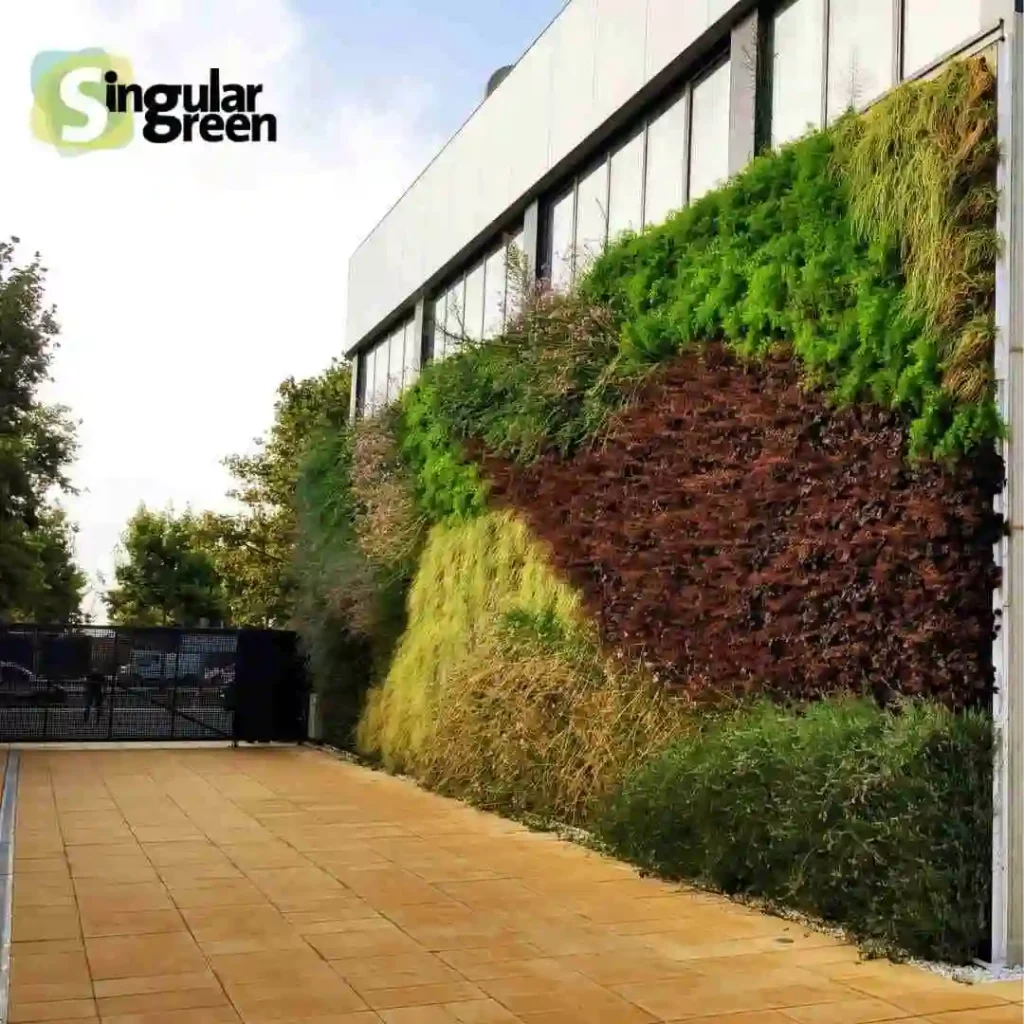

Enhancing outdoor spaces with vertical gardens
While living walls are often associated with indoor environments, they can also be an excellent addition to outdoor spaces, providing a range of benefits and enhancing the overall aesthetic of your exterior areas.
One of the primary advantages of incorporating vertical gardens into outdoor settings is their ability to create a sense of privacy and seclusion. By strategically placing living walls or green facades, you can effectively screen off unwanted views, create intimate seating areas, and establish a more private and secluded outdoor oasis.
Outdoor living walls can also serve as a natural way to add visual interest and texture to your landscape. Whether you opt for a vibrant mix of flowering plants or a more subdued palette of foliage, these vertical gardens can complement the existing landscaping elements and contribute to an overall harmonious outdoor design.
Beyond aesthetic considerations, outdoor living walls can also offer practical benefits, such as providing shade and regulating temperature. The evapotranspiration process of the plants can help to cool the surrounding air, making outdoor spaces more comfortable and inviting, especially during the warmer months.
By exploring the various options for incorporating vertical gardens into your outdoor spaces, you can create a seamless transition between your indoor and outdoor living areas, fostering a sense of unity and enhancing the overall appeal of your property.
Case studies: Successful examples of living walls around the world
To better understand the transformative power of living walls, it’s valuable to examine real-world examples of successful installations around the globe. These case studies can provide valuable insights and inspiration for those looking to incorporate vertical gardens into their own spaces.
One notable example is the Athenaeum Hotel in London, which features a stunning living wall that covers the entire facade of the building. Designed by renowned landscape architect Patrick Blanc, this vertical garden not only enhances the building’s aesthetic but also helps to regulate the indoor temperature and improve air quality for the hotel’s guests.
Another impressive case study is the Bosco Verticale (Vertical Forest) in Milan, Italy. This residential development features two high-rise towers that are literally covered in trees and shrubs, creating a lush, urban oasis. The Bosco Verticale not only provides visual delight but also contributes to the city’s biodiversity and air purification efforts.
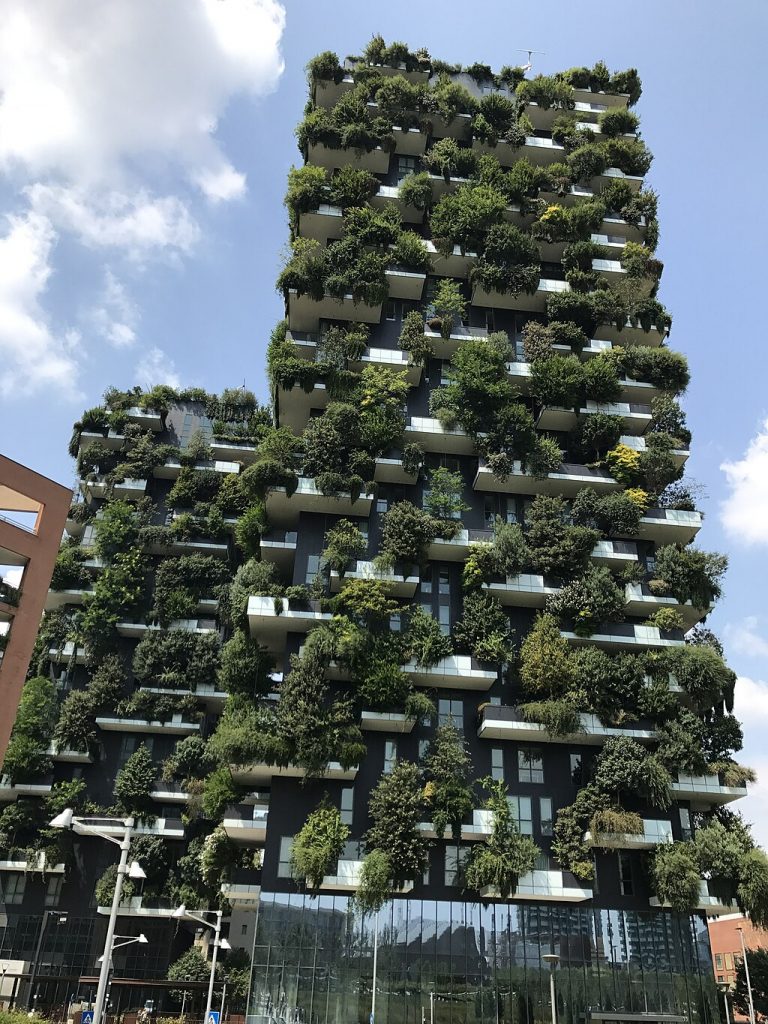
In the United States, the California Academy of Sciences in San Francisco boasts a living roof that doubles as a vertical garden.

Designed by renowned architect Renzo Piano, this innovative installation helps to insulate the building, manage stormwater runoff, and create a habitat for local wildlife, all while providing a stunning visual experience for visitors.
These case studies, and many others around the world, demonstrate the transformative potential of living walls and vertical gardens.
By drawing inspiration from these successful examples, you can explore ways to incorporate these green installations into your own spaces, whether it’s a small urban balcony or a large-scale commercial project.
Conclusion: Transforming your space with a vibrant living wall
In conclusion, the incorporation of living walls and vertical gardens into your living or work environment can be a truly transformative experience. These innovative green installations offer a wealth of benefits, from improved air quality and temperature regulation to enhanced aesthetic appeal and connection to nature.
Whether you opt for a modular living wall system, a hydroponic design, or a lush green facade, the possibilities for creating a vibrant and thriving vertical garden are endless. By carefully considering the design, plant selection, and maintenance requirements, you can tailor your living wall to suit your specific needs and preferences.
Beyond the practical advantages, living walls also have the power to evoke a sense of calm, serenity, and biophilic connection within your space. By bringing the beauty and tranquility of nature indoors, you can create a more soothing and rejuvenating environment that positively impacts your overall well-being.
As you embark on your journey to transform your space with a living wall, remember to draw inspiration from the successful examples around the world and seek the guidance of experts who can help you navigate the process.
With the right approach and dedication, your vertical garden can become a true oasis that enhances your daily life and leaves a lasting impression on all who experience it.
So, what are you waiting for? Start exploring the wonders of living walls and let them breathe new life into your space, creating a harmonious and sustainable environment that you can enjoy for years to come.





